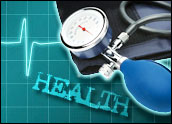
Intel has received the Food and Drug Administration’s clearance to market Health Guide, an in-home device that lets healthcare providers monitor a patient’s vital signs via the Internet. It also provides interactive tools such as video conferencing and e-mail to facilitate communication and education outreach.
Health Guide can connect to specific models of wired and wireless medical devices, including blood pressure monitors, glucose meters, pulse oximeters, peak flow meters and weight scales. It stores and displays collected information on a touchscreen and then sends it to a secure host server for the healthcare provider’s review.
Intel expects the device will be commercially available from healthcare providers in the U.S. and United Kingdom in late Q4 2008 or early Q1 2009.
Market Demand?
Like many developments in the personal healthcare technology space, Intel’s new gadget has a certain amount of sex appeal; whether that will translate into broad adoption, though, is unclear.
At present, only about one-tenth of all practicing U.S. physicians use anelectronic remote monitoring device to manage their patients’ chronic conditions, reports Manhattan Research, a pharmaceutical and healthcare market research and advisory services firm.
The expensive back-end investment required for such services is one reason for their slowness to catch on.
“Despite the great level of efficiency afforded by the technology, these low adoption numbers are likely attributed to the high cost of comprehensive remote patient-monitoring solutions, such as telemedicine systems,” Erika S. Fishman, director of research and client services at Manhattan, told TechNewsWorld.
However, it may be that the market is ready to move beyond these low adoption numbers. For starters, there is the business case for RPM.
“Over time, RPM solutions are intended to lower practice costs, decrease the number of staff necessary, and make in-patient hospital stays shorter and less frequent,” Fishman said.
Most RPM devices are meant for heart conditions, she noted, but products aimed at managing asthma and diabetes are becoming more common.
Physicians would like Intel’s Health Guide, said Devon Herrick, a senior fellow and health economist at the National Center for Policy Analysis, because it provides a continuous stream of data from many different vital signs, as opposed to a once-a-month snapshot taken in a typical doctor’s office visit.
Because Health Guide integrates personal heath records with telemedicine and remote monitoring capabilities, it could grab more market share than the standalone components have done so far, he told TechNewsWorld.
A New Category
Indeed, Intel is promoting Health Guide as a new category of personal health system technology that goes beyond the remote patient-monitoring devices now available.
“We envision a wide range of usage models, not only chronic conditions such as [congestive heart failure] and diabetes, but also programs for health and wellness management at home,” said Louis Burns, vice president and general manager of Intel’s Digital Health Group, in a statement. Intel was not available for an interview.
Broadening its use for wellness is part of the Health Guide’s appeal — and such alternative uses may, in fact, be easier to implement than more traditional settings, Andrew Rocklin, principal in the healthcare practice of Diamond Management & Technology Consultants, told TechNewsWorld.
The diet and fitness industries offer intriguing possibilities, he said — and those markets tend to be less price-sensitive.
Despite the rich data stream, there may be adoption problems among doctors and patients, Rocklin suggested, because many have established set ways of interacting with one another.
There are other matters to consider as well, such as the boundaries of doctors’ responsibility. What if a patient suddenly declines while using the monitor? Would a doctor be required to get in touch with a patient whose vitals were deteriorating? Rocklin wondered.
Other scenarios that might give rise to thorny questions: nurses or physician assistants are hired to monitor the signs; a private sector provider collects data and provides feedback for physicians.
“There are a lot of practical implications to this product,” Rocklin concluded. “I do think the market can be huge, and there is a lot of value to be unlocked — but that will require a focus on additional tech investments, new evaluations of the business model, and so on.”





















































Thank you for your very informative article!
We’re looking for personal health technologies which will fit into our Maui Connected Care System
( see http://www.mauiagewave.com).
We firmly believe that the 75 million baby boomers now involved with elder caregiving and feeling the onset of chronic diseases will explode the demand for any "integrated" personal health and wellness technologies which can help them and their loved ones to age in place with quality and attain the lower health costs that derive from self empowerment and proactive health management.
We look forward to more of your coverage of these
innovative technologies.
Thank you,
Peter